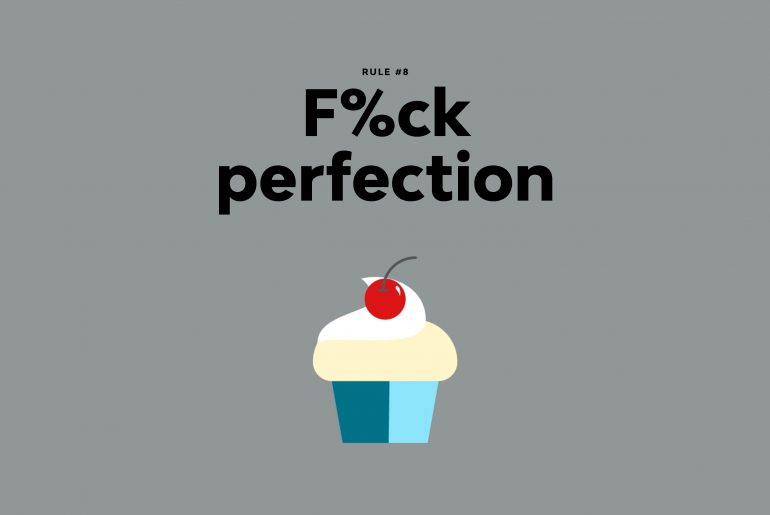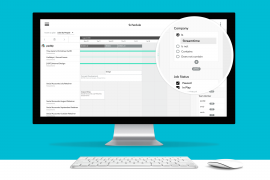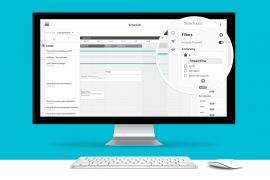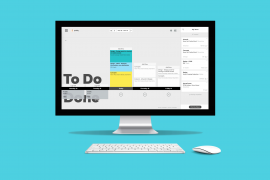Apologies for stealing a line from James Victore. But when it comes to digital product design we say “F%ck perfection”.
This is another huge shift in mindset from when we started in design. And one that many designers aren’t comfortable with. Yet.
Because it goes against everything we’ve been taught to stand for as a designer.
We’re taught from day one that our work needs to be perfect. The perfect idea, the perfect execution with the perfect craft. We’re taught that it is a creative accelerator.
That perfect gives you an edge over your competitors.
We’re here to tell you that it doesn’t.
The problem with striving for perfection
When I think back to my early years as a designer I wasted hours and hours – paralysed by the fear that my work wasn’t the perfect solution to the brief I was working on. Then I’d send more hours agonising over the design decisions over tiny inconsequential things.
And when I look back now I see that I was wasting my time. Time that could’ve been spent actually making the thing quickly, so I could put it into the real world, so it could do what it was intended to do – solve a problem, communicate a message, provide function or utility. Instead it was stuck on my iMac whilst i was shifting pixels meaninglessly around the screen.
Back when I worked at a well known, creative agency in Sydney, the strategists would spend weeks and weeks agonising over the wording of a brief. I’m talking about writing and rewriting a one page brief hundreds of times. They were trying to deliver us, the creatives, the perfect brief, so we could deliver the perfect piece of work. But they wasted so much time working on the brief, that we had no time to answer it. The result was that our work was rushed and poor and we missed deadlines. Their pursuit of perfection had the opposite effect to their intentions.
In today’s world things move so fast that we haven’t got the luxury of being able to waste time.
And nor should we want it.
Things have more value out in the real world, rather than sitting on a presentation deck in Google Drive, or in your Photoshop file.
So at Streamtime we say imperfect is better than incomplete. We say getting things done is better than getting things perfect. We flip the traditional mindset that was passed down to us in our design education. And we believe it leads to far, far better, more meaningful work.
Rethinking the notion of perfection
If you develop this thinking even further you get here.
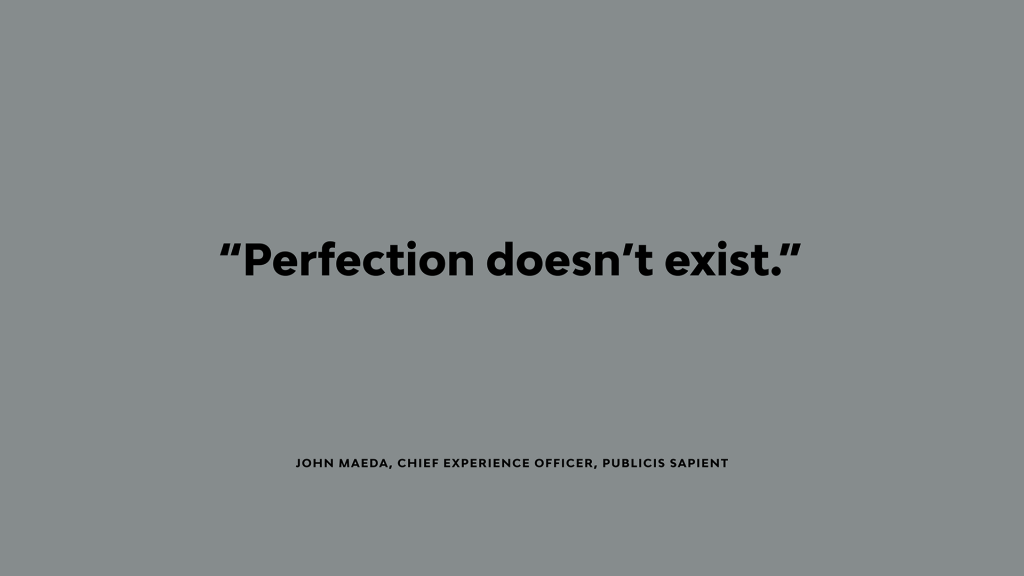
John Maeda goes so far to say that in computational design “Perfection does not exist”.
Once you realise the value in this mindset your creative shackles are broken, you’re able to be adaptive, fluid, proactive and change to people’s needs.
So what does this look like at Streamtime?
Well it means we put stuff out there that isn’t a perfect solution, but by being out in the real world, it delivers value to people, and we can then ask them about how it can be improved, so we can design a better solution, that provides even more value.
It’s all part of following an iterative approach to design. One where you are constantly experimenting, getting feedback, improving and releasing. And that approach looks like this. It’s called the Double Diamond.
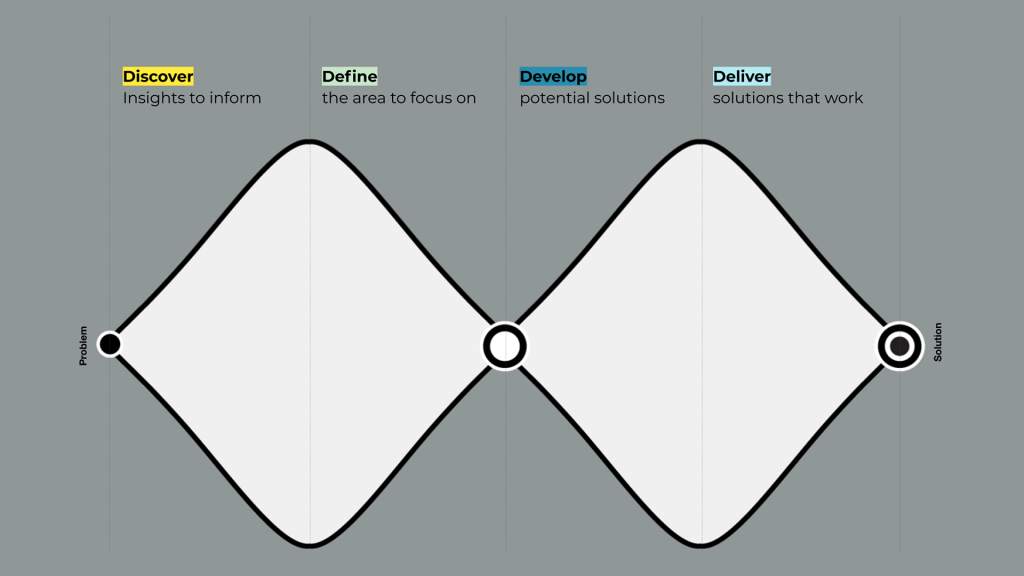
And as a methodology it’s inherently designed with no finish line. Because as soon as you deliver a solution you then loop back to the start to discover insights into how you can improve what you’ve just delivered.
With no finish line, there can be no perfection
But that’s not to say we just release any old thing. We strive for excellence of course, but not perfection. Two similar words, but two completely different mindsets. What we put out has to be excellent – in its creative thinking, in the UX, the visual design, animation and ultimately in the way it solves a problem for our users. It won’t be perfect. But it’s going to have more impact, released and providing value to our users, than in our Sketch file on our server.
All of this also ties back into what Sarah was talking about – leaving your ego at the door. It’s about not being afraid to get something in front of a user and ask for brutal feedback. So we can find out where the problem is and how we can improve. So just put it out there. Test it, validate it, improve it.
Then do it all over again.
That’s why we strive to ship to constantly improve on what we’ve done before.
So remember. Perfect hinders our creativity. Perfect wastes our time. Perfect is the enemy of progress.
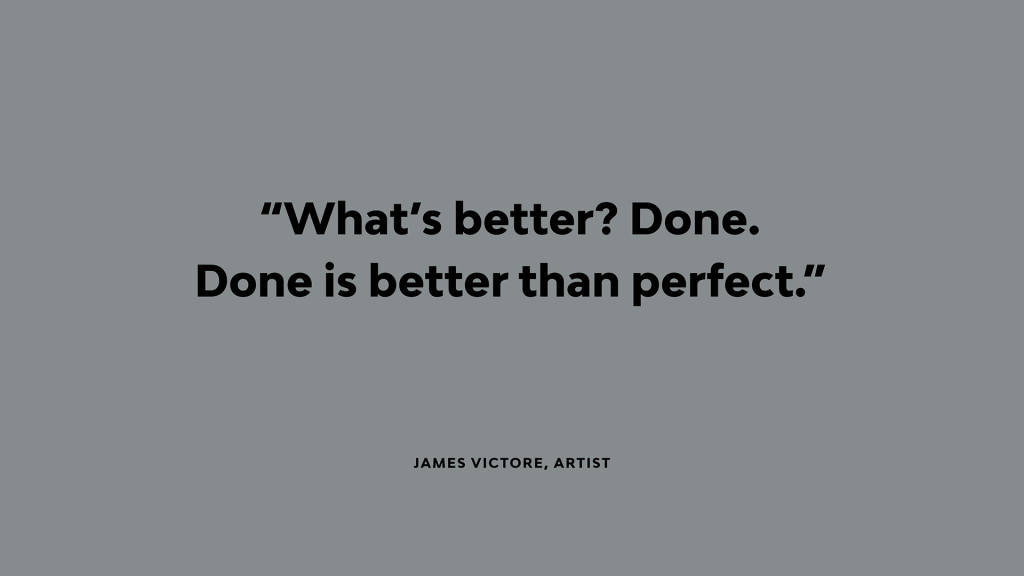
And as Victore says in his book: ‘What’s better? Done. Done is better than perfect.’
Keen to learn more?
We’re sharing our Product Design Playbook. 10 rules we follow when we design. Head here to read other posts from the series.


